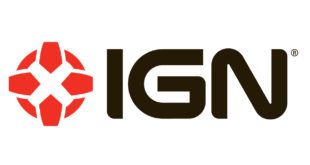Following our look at how social media can be used to build communities, IGN’s Rich Keen discusses the new challenges this poses for media firms as pubishers and developers reach out to fans directly
When it comes to digital channels there’s no doubt that the lines between games publisher, retailer and media owner are blurred. Retailers want to be more like media owners, integrating compelling editorial content to attract and retain customers. Publishers want to be more like retailers directly monetising their consumer. As for media owners, we want to demonstrate that we’ve got the most direct route to the games consumer and that we’re the most effective channel through which to connect them to retailers and publishers.
Ultimately we’re all vying for the affections of the gamer, each with our own unique chat-up techniques that will enable us to build trust, eventually a relationship that enables us to influence them. Peer-to-peer referral just can’t be beaten. Brands build a community of early adopters and influencers around them because they want to be at the start of that referral chain, to be the best mate that influences the fan, who in-turn influences the world. That’s IGN’s strategy.
For a media brand like IGN having an active community has many benefits. To be truly effective as a media owner you need to have both significant scale and high levels of audience engagement, with your loyal community being the gateway to both. We recognised this in 2008 when we fused social into the heart of our platform by adopting social referral buttons and by launching our YouTube channel. We didn’t know exactly what success looked like we just knew that we needed to enable our users to engage with our content outside of our usual destinations and that by connecting our users more directly with each other, the conversation that developed would allow our content to travel and brand awareness would increase. Today engagement with the IGN brand is as strong off our website as it is on. We passed 1bn video views on YouTube recently and we’re already close to breaking 2bn.
If the world moves quickly in the world of digital media, it moves even quicker in social media. When we launched our Facebook and Twitter channels a couple of years ago our goal was simple – acquire the most followers, but after spending time on these platforms we completely redefined our goals and success metrics. We saw that having a large number of followers or likes to a profile doesn’t mean that the same number of people are actively visiting and engaging, so we refocused on metrics that measured interaction.
After all, social media is most powerful when used as a means to spark discussion, enabling your community to engage with each other around your brand, rather than just relying on it as an extended broadcast tool. It’s this interaction between users, money can’t buy engagement – the earned media we all crave that delivers extraordinary results.
Remember that Dead Island trailer explosion? If it wasn’t for our social media integrations on IGN.com this would have been a massive story on the website when we launched it as an exclusive but it wouldn’t have amplified to the masses.
Facebook’s recently launched open analytics tools give a clear nod to their increasing focus on interaction and engagement over reach. Their new ‘Talking About This’ metric (the number of people who have actively engaged with or contributed to your community in the last 7 days) allows you to define what percentage of your followers are actively interacting with you at any given time. We look to have a minimum of 10% of our total users actively talking about us, this is currently at the high-end of Facebook engagement in our market but our goal over the next 12 months is to get to 30%. We know that we’ll increase our followers if we nurture conversation and interaction within our community so engagement goals are always a priority over user volume goals, as ultimately if you focus on short-term, low-quality social user acquisition you stifle your chances of sustained long-term growth.
It’s not a strategy everyone agrees with. Next time you are on Facebook visit some of the brands you perceive to be market leading and click on the ‘Likes’ button on their profile to check out their ‘Talking About This’ numbers, I think you’ll be surprised by what you find.

 MCV/DEVELOP News, events, research and jobs from the games industry
MCV/DEVELOP News, events, research and jobs from the games industry



